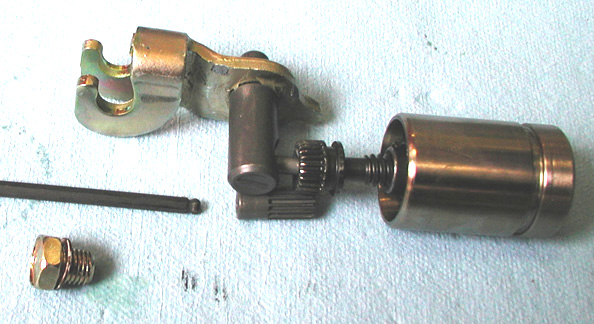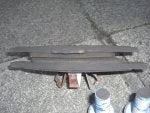Just a heads up - I replaced my front discs and pads today. In the process I also upgraded from the 15"/278mm discs to the 16"/300mm discs. As they use the same hubs, backplates and calipers, all that is required is a replacement pair of the 300mm caliper mounting brackets. If you want to do the sae, the Volvo part number for the bracket is 36002809 (they are ambidextrous - the same bracket is use don both sides).
I think they are about £70 each from Volvo, so I looked elsewhere. Looking round the UK breakers I saw a few, but they are always sold with the caliper attached, which costs more and the extra lump of cast iron costs more to ship too for a part you don't need. Instead, I looked over at Bildelsbasen, a Scandinavian marketplace for used car parts which predictably has a lot of Volvos available there, and the breakers mostly list the calipers and brackets separately.
I bought a pair from one of the sellers there from a 2015 D2 (quite why some D2s have the 278mm discs and others have the 300mm discs I'm not sure). which even with shipping from Sweden cost less than buying a pair of calipers and brackets from a UK breaker (they normally run about £50 each). When they arrived they were quite rusty and most of the zinc plating had come off (I suspect Wonder Wheels may have been used on the car they came off) so they needed a bit of attention from the wire brush in my drill, some emery cloth and then a coat of rust converter gel. Finally I gave them a couple of coats of silver Smoothrite, after masking off the pad bearing surfaces and mounting bosses.
In the meantime, I then ordered a set of 300mm discs and pads from a Newcastle-based Volvo dealer on ebay (after first emailing to explain what I was doing, as they asked for my registration number and were going to send 278mm parts instead).
Today I finally got round to fitting them. Unfortunately I was dodging the showers so didn't get time to take many photos, but here's a comparison of the 278mm and 300mm discs and caliper brackets:
Here's what my old discs and pads looked like after 38k miles of Motorway/A-road driving:
The discs had worn maybe 1.5mm on each side, The pads were probably about 70% worn - I might have got another MOT out of them, but I thought I'd get it done while I was off.
A couple of tips for anyone wanting to have a go at changing discs themselves:
1) Volvo discs come with a new set of caliper bracket bolts, but no new large countersunk Torx bolts that hold the discs onto the hubs. It might be a good idea to get a new pair, as they get very rusty and are tricky to remove without damaging them
2) The caliper bracket bolts are threadlocked and quite difficult to free off. They use an 18mm socket, but I'd recommend getting a decent 18mm ring spanner as well so you can use a mallet to get them moving (it wasn't helped on my case by whoever put the passenger side hub together going overboard with the threadlock - it was everywhere)..
It all seems to be working, but they are still in the bedding-in period at the moment so I've hot given them a hard prod of the pedal yet (I was out earlier doing a couple of laps of the local industrial estate doing gentle clutch-down stops from 40mph to bed them in).









